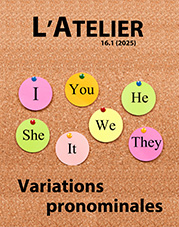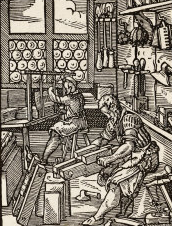Pronouns, Presence and Authority in John D’Agata’s “Collage History of Art, by Henry Darger” (2001)
Abstract
In this paper, I argue that John D’Agata’s essay “Collage History of Art, by Henry Darger” (Halls of Fame, 2001) is configured by the constant dramatization of the notion of presence. Drawing on a stylistic approach, I explore how its use of deixis directs our attention towards the pragmatic implications of self-reflexivity, effects of address and authorial intention within the specific framework of non-fiction. These considerations naturally connect with D’Agata’s wish to exploit the porousness between factuality and fictionality within the genre of the essay, presumably regulated by what Fludernik calls “the factual pact”. I first examine how enunciation is built in D’Agata’s ekphrastic essay on the work of outsider artist Henry Darger, and the challenges that the reader faces when encountering the pronouns “I” and “you” in a nonfictional context, before engaging with the presence effects that are brought on by the use of “we” and the imperative mood—devices which prompt readers to envisage literature as a conversational gesture, exhorting them to engage with artby taking part in the building of a supposed discursive community.
Keywords: John D’Agata, Henry Darger, deixis, pronouns, stylistics, essay, non-fiction, genre, authority, David Foster Wallace
Downloads
Published
Issue
Section
License
- Work submitted for publication must be original, previously unpublished, and not under consideration for publication elsewhere. If previously published figures, tables, or parts of text are to be included, the copyright-holder's permission must have been obtained prior to submission.
- Authors of accepted manuscripts will assign to L'Atelier the right to electronically distribute their article, or publish it in any form (Internet, CD ROM, printed copy) but authors will retain copyright and, after the article has appeared in L'Atelier, authors may republish their text (in print and/or electronic form) as long as they clearly acknowledge L'Atelier as the original publisher.


